
13th hole at Northumberland, host of the 2024 AGSA Scramble, presented by Envu














13th hole at Northumberland, host of the 2024 AGSA Scramble, presented by Envu












2024 CGSA Shamble Chester Golf Club hosts inaugural event.
Turf Pest of the Month
Superintendents can find annual bluegrass weevil (ABW) in the Eastern part of the US and Canada. 14
Out with the Old, In with the New Bunkers are one of the most talked-about aspects of golf, but their maintenance can be a major issue.
If you are suffering, what are the support systems that you can look to that for help? 22
Support System

Atlantic Golf Superintendents Association
Membership Rates *
Class A & B $190
Corporate $220
Industry Affiliate $175
Student $60
Maintenance $60
4+ employees hired by a Class A $180
Ad & Article Deadlines
February (Supplier) January 1
May (Spring) April 1
July (Summer) June 15
October (Fall) September 15
Advertising Inquiries
AGSA Inc
President’s Message pg. 5 pg. 8
Irrigation Corner pg. 13
571 Willow Avenue, Unit 1
New Glasgow, NS B2H 2A1
www.agsa.ca
Executive Director
Jim Nix
1967agsa@gmail.com
Turf News Editor
Jim Nix
Contributors
Matt Blackburn, Barry K Stone, Paul MacCormack, Jamie Matheson, Emerson Coulter, Ben McGraw, Ph.D, Albrecht M. Koppenhöfer, Ph.D.



*Membership prices are +HST
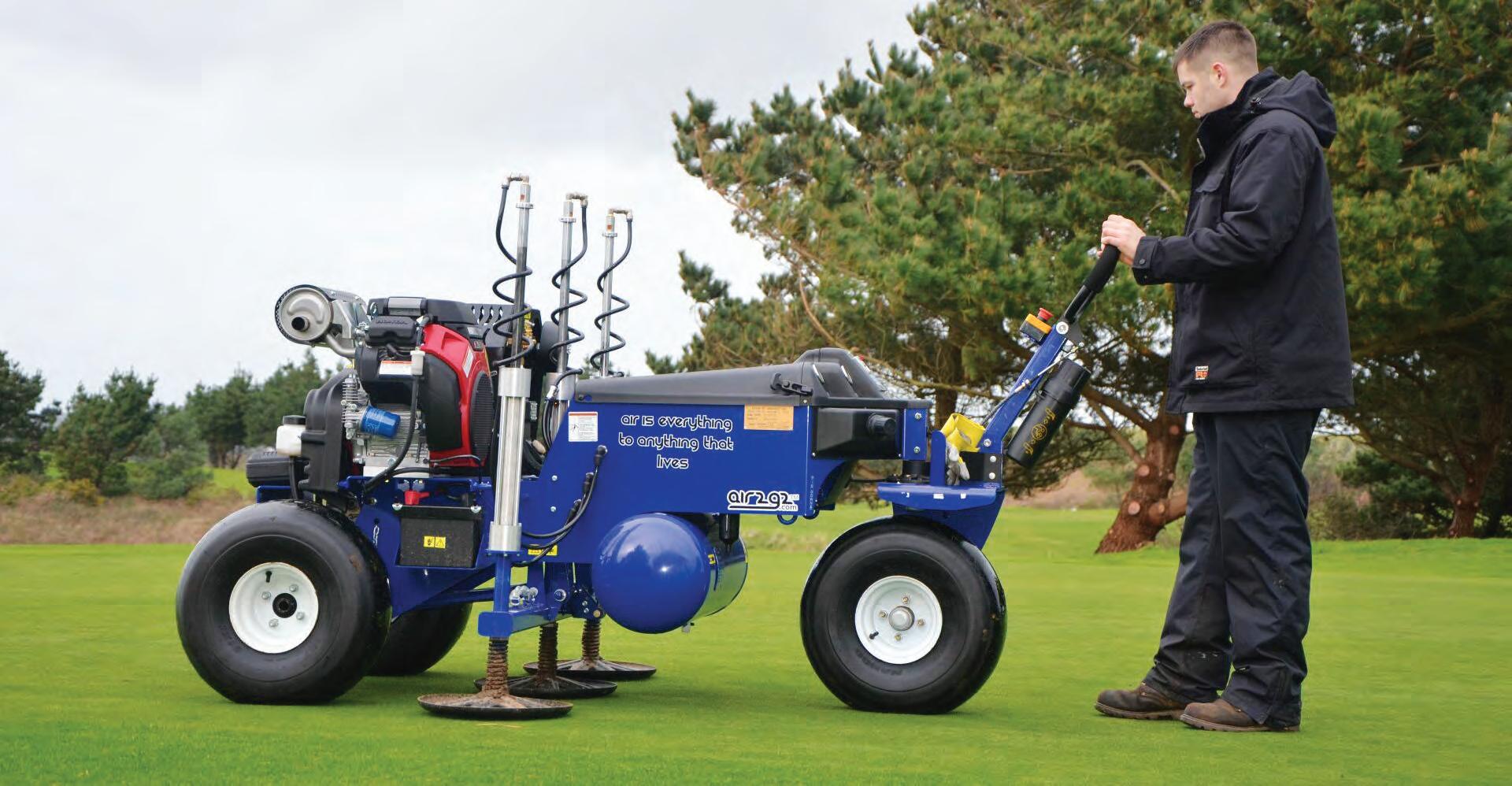


Steven Walsh, President

AGSA President
Now is the time when all the work you put in during the spring is paying off. With courses busy there is not much time for extra work now. We just try to get into a routine and make it to September. Take time to enjoy the quiet mornings, these are some of the best days of the year. The weather has been cooperating as much as can be expected. It was a slow start, but the turf is growing well now and filling in. I know lots of people had projects that they are happy to have buttoned up.
We are confirmed for our scramble at Northumberland Links. This was a moving target for a while with some circumstances beyond our control. I think everyone will be happy with this venue and should be excited to see the changes. I’m sure host superintendent John Mills will make the day a treat for everyone.
If you have done even just a little project and would like to share, please reach out and we can get it in the Turf News. Everyone loves to hear about what other people are doing but that only works when articles get submitted. It can be understandably intimidating but don’t let that stop you!
As the summer heat sets in be mindful of your staff out in the sun and the heat. It seems like we are getting hotter temperatures, and we need to recognize issues with working in that kind of heat.
I wish everyone the very best with all their highlight events throughout the summer. Be proud to showcase what we do!
Matt Blackburn AGSA President
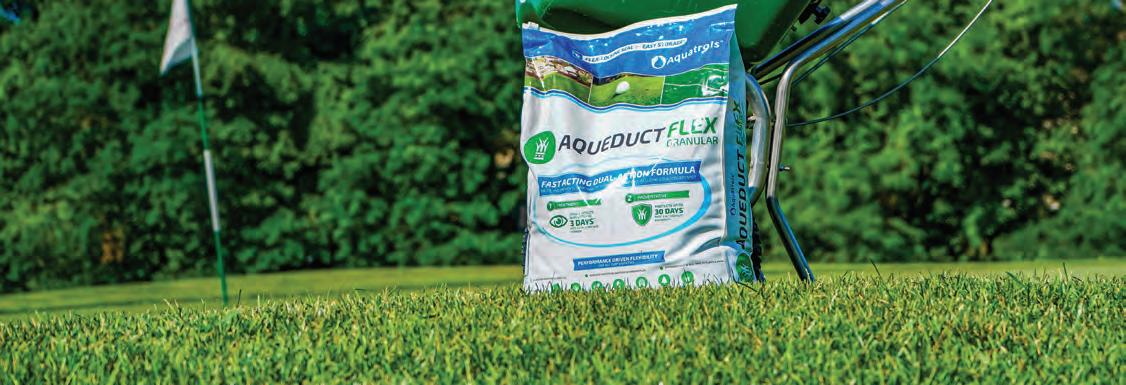









In the winter of 2024 the CGSA Board was discussing the possibility of a golf event on the East Coast, considering the Fall Field Day is in Vancouver. When we discussed possible sites, I suggested that if we want to try to draw people from outside the Atlantic area then we need a venue on the ocean. I came home and mentioned it to my GM Alex, and he really wanted to showcase what we have been doing here the last few years. The timing worked well because we aren’t really allowed to have outside events in July and August to make sure we can accommodate our seasonal residents.
On my end we had a huge mess everywhere from our drainage work in the fall so we really wanted to get that cleaned up before the event. With a lot of repaired areas being seeded I knew we had to get things done well in advance so they would be filled in for the June 25th date.
Most often when we have these one-day events involving a course tour it is with an Agronomist and we look at turf issues. I thought it might be a fresh idea if we had a course tour with an Architect instead. We had just recently engaged Jeff Mingay to look at some planning for the club moving into the future. I thought it would be a great opportunity for him to share his ideas with the group. A lot of us are dealing with the same type of issues. We have older golf courses that may have been pieced together with multiple people doing work on the property or different Green Chairpersons with different agendas.
Having a group of your peers look and play your property can be a bit daunting but also very rewarding. My staff really bought in and wanted the property to show well for the event. I feel like everyone really enjoyed the walk around with Jeff and his solutions and suggestions for problems we all face.
The golf was a different format where you play from the best ball off the tee and then play your own ball to finish the hole. Each two-person team then records the best of the two scores on the hole as the team score. We finished off with some surf and turf supper and some great fiddle music.
I encourage all people to get involved in their association and attend events when they are made available.
Matt Blackburn
Golf Course Superintendent
Chester Golf Club



With Tier 4 just starting to hit the golf industry, it can bring with it a fear of new technology. Like many things, it’s the unknown that brings the most apprehension. We can change this by educating ourselves on these new products .
Personally, I would still rather deal with the old mechanical systems, but those days have passed and we must move forward with the times. And while Tier 4 may be new to golf equipment, these new emission controls have actually been around for awhile. In a previous career spent working on Buses, around 2007 or so, I started seeing this stuff.
Tier 4 refers to emission standards set by the EPA to reduce emissions . It involves an exhaust filter and a lot of sensors.
One of the biggest things I found while dealing with Tier 4 Buses was making sure the drivers were educated on what the warning lights meant . Once they understood what the lights stood for, and when to expect them, it reduced the calls back to the shop greatly. The same should be true for turf equipment.
The other important thing is we need to educate ourselves as techs. This new equipment has wonderful on-board diagnostics but it is only as good as our knowledge.
There are terrific online sites where we can learn about all these features . The more we can train ourselves the easier it will be for the techs at the dealerships to help us when we call. As I sit here typing this article on a computer, I am just remembering how complicated I thought computers were the first time I used one. Now it seems like I use one for nearly everything I do.
If you can devote some time to training yourself to understand Tier 4 technology, this basic understanding, some help from the onboard diagnostics and information, and insight from your equipment dealer will allow you to apply the KISS method (keep it simple stupid) to service and repair.
And while we are on the subject of equipment dealers: Before I worked in turf, I spent my career in automotive,
heavy equipment, and bus repair. Turf is by far the best in terms of dealerships being willing to help you out and giving you access to information. If you ever get the chance to get to a service course it is always money well spent. It is important for our employers to recognize the importance of training . A few tow calls to the dealership will quickly pay for any training courses .
In the second part of this article I would like to talk about brushing. We have been brushing our tees for a few years now and our greens for a couple more. We think we are seeing less thatch, and for sure there is better ball roll on the greens (truer and faster). And things just look better.
It has been so successful that this year we started also doing our fairways. We put fairway brushes on one of our mowers in mid May and already they have been a great success . We bought the brushes, and the mechanic who works with me built very simple brackets and mounted them to the front roller brackets on the fairway unit. We are now working on our second set.

With the warm weather coming it is very important to make sure we keep our rads blown out. Behind our shop we have an air hose hooked up at all times for the operators to clean the rads out. Make sure you keep your fan belts tight. Be cool this summer!
Make sure you keep the water level checked in your battery carts. In the hot, busy season it can drop more quickly.
Don’t forget to take time and enjoy some of summer with family!
Hope everyone has a wonderful summer! May your hydraulic lines be tight and your greens be fast !
Jamie Matheson Head mechanic Brudenell River /Dundarave golf courses
• Trusted
•



Productivity, efficiency, simplicity and lighter weight, all packed into a compact chassis.The Reelmaster 3555-D was designed to be over 20% lighter, and much more compact than a traditional Toro fairway mower. The result is fairway mowers that deliver the performance you’ve come to expect from Toro, in a size that is highly maneuverable, and engineered to decrease turf compaction in sensitive areas.



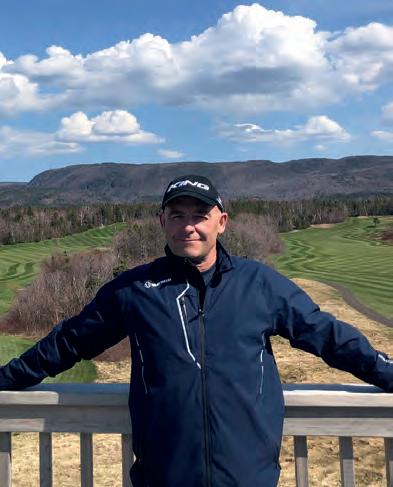
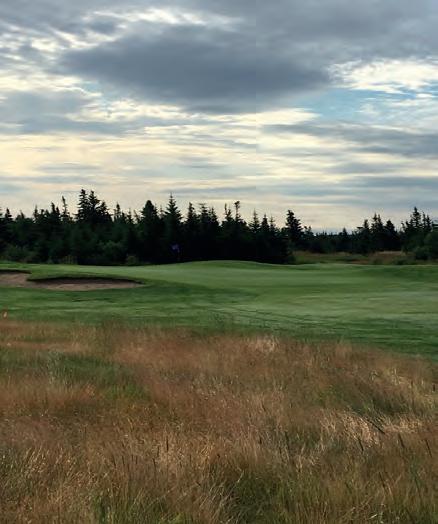




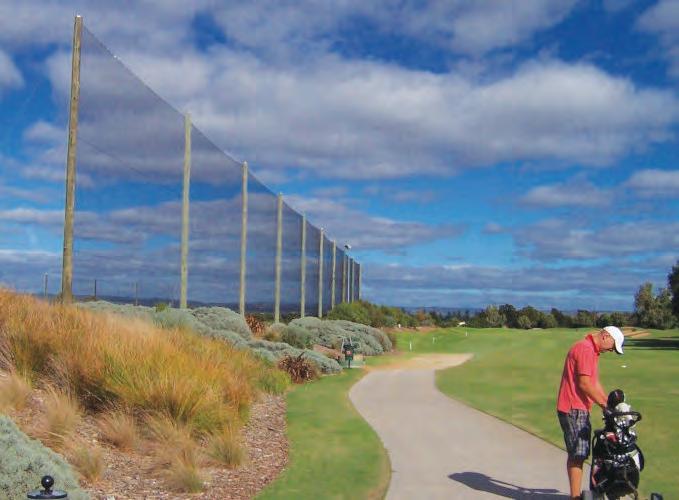
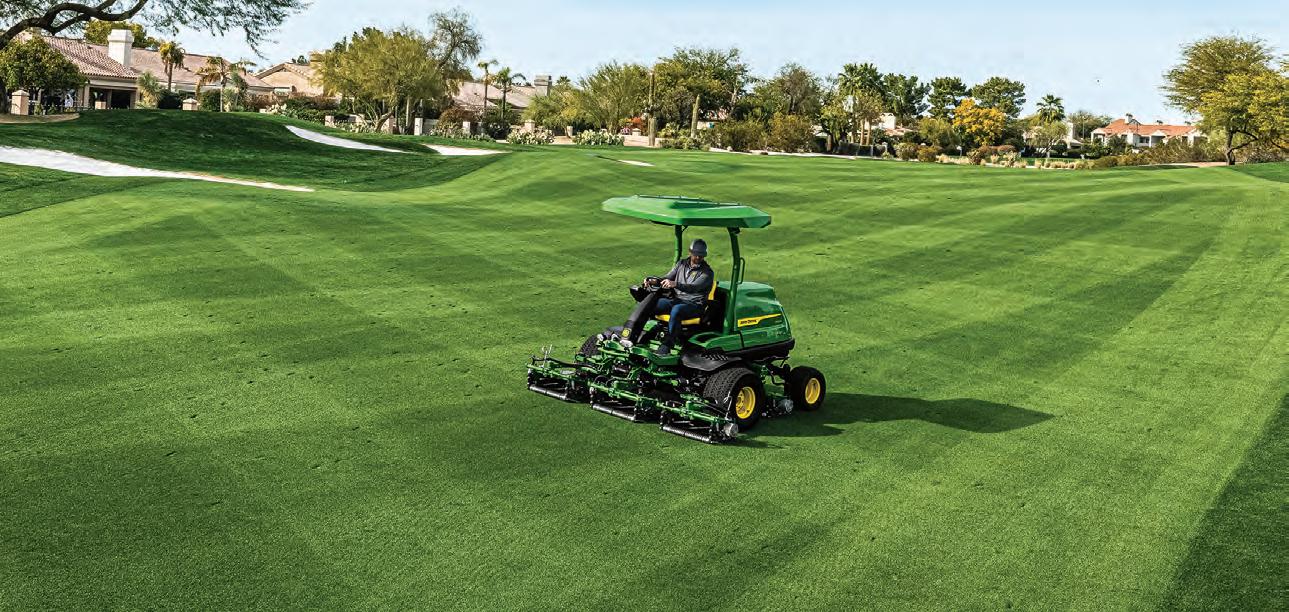













No matter what challenges your greens and fairways face throughout the year, Envu is ready with the right answer for your turf’s needs. Dedicate® Stressgard® fungicide delivers exceptional protection against all major snow moulds in Canada, while also offering preventative control of in‑season diseases such as summer patch, anthracnose, dollar spot and leaf spot. To learn more about how these products can help improve your turf, contact your local Envu specialist. Program savings available now!




Barry K Stone CGIA
Thinking about irrigation upgrades, or pump station work, below are some ideas and things to consider prior to starting the work, and when best to complete the work.
Things to consider when doing fall upgrades and repairs, would it be better to do these items after blowout, or before, will the system need to be operated to test these, or are they better to be left until spring startup. Any items where new pipe is added to an existing system, or additional pipe is added to irrigate a new area, can wait for spring startup, provided that all joints and thrust blocks or devices are installed properly. By doing this kind of work after blowout, it eliminates the water issue when cutting into existing pipes, and allows trenches to settle over the winter, and soils to become well packed around those same pipes. This is also the time to replace worn or damaged isolation valves.
When replacing tees, elbows, pipe sections, or valves, there are choices to be make about , PVC fittings, verses ductile fittings with joint restraints. The cost is higher for ductile but offers a longtime, permanent solution that can be pressurized immediately, tested and buried. Solvent welding pipe over 3 inch is not always easy and the pipe needs to be beveled just like a gasket fitting. For the no solvent weld, no beveling pipe solution for joining two pipes the Hymax Grip or Alfa style fittings work best.
Updates and changes within the pump house often need to be tested prior to the season and if possible fall is a good time to complete this type of work and get the testing and commissioning done prior to blowout , complete pump station installs are often done later in the fall as they may involve changes to the main discharge pipes and therefore leave the system inoperateable for a longer time frame. Complete pump station setups come pretested and ready for operation with little additional work required.
This is also a good time of the year to plan for late winter and early spring work in the pumphouse department and this type of work can be completed prior to spring startup.
When considering any major work involving pumps or motors remember that these have much longer lead times and will require some forward planning to have all the necessary products.
Any submersible pumps removed from the water should only be placed in heated storage or returned to their original position in the water, as the motors associated with these pumps contain a very thin layer of liquid and often is one that will freeze and destroy the motors if left in cold storage.
The last item to think about is your central control system and if there is any need to upgrade, either the software, or computer tower, again the fall and off season is a great time to do this type of work.
Enjoy the remainder of your summer and may your problems be few, your rains gentle, and conditions ideal.
By Albrecht M. Koppenhöfer, Ph.D. and Ben McGraw, Ph.D.
Superintendents can find annual bluegrass weevil (ABW) in the Eastern part of the country and Canada, although entomologists identified the pest as far west as Wisconsin and as far south as Virginia. Albrecht Koppenhöfer, Ph.D., professor and Extension specialist at Rutgers University’s department of entomology, and Ben McGraw, Ph.D., turfgrass science professor at Penn State University, share what superintendents need to know about this notorious pest.
Resistance Management — There are pesticideresistant ABWs, depending on location. Koppenhöfer said it’s important to rotate modes of action to prevent further resistance.
“We are concerned that the overuse of the remaining effective insecticides will desensitize ABWs to these compounds as well,” Koppenhöfer said. “Golf course superintendents need to delay resistance development by applying control products only when and where necessary. That requires monitoring and sampling methods.”
Windows to Treat — Superintendents should think about ABW treatment as being in two windows: managing overwintering adults before egg-laying with short-residual, broad-spectrum insecticides and targeting the pest as larvae. Unfortunately, as Koppenhöfer mentioned, pyrethroid-resistant populations continue to expand across a wider region. Research also shows ABW populations also show insensitivity to non-pyrethroid insecticides.
A more curative approach, McGraw said, is to focus on targeting larvae as the pest moves out of the turf. This includes using integrated pest management (IPM) protocols which involve applying controls when the pest is present and above damage thresholds of 30-40 larvae per square foot.
“Our studies indicate that greater numbers of larvae are present during the first generation and potentially more damaging than following generations,” McGraw said. “However, the probability of successfully controlling the first generation is greater than subsequent generations since summer generations (second and third) will overlap with earlier generations.
Sampling turf in the summer often reveals all life stages in the same area.”
Combined Approach — Koppenhöfer and McGraw said superintendents need to think about multiple applications in the spring, especially in areas with high ABW pressure.
“It should be stressed that the larvicide application of the combination approach may not be warranted and should only be applied if sampling reveals that the larval population has exceeded thresholds,” Koppenhöfer said.
McGraw and Koppenhöfer’s research shows Poa annua is 10 to 15 times more susceptible to damage than creeping bentgrass. Superintendents with primarily Poa courses could benefit from larvicide applications to keep populations low. But, superintendents need to understand that regardless of turf variety, it’s about management, not eradication.
Scout, Scout, Scout — Another key element to ABW management is scouting. If superintendents opt for IPM, scouting becomes key to understand the amount of pest pressure found on the course.
“Scouting requires destructively sampling turf, typically by removing cores with a cup cutter or knife and placing the material in a saturated saline solution to extract larvae,” McGraw said. “Sampling is critical for determining when larval populations are about to move out of the plant and are susceptible to larvicides. However, it’s impractical for most superintendents to obtain detailed estimates of population structure.”
This article originally appeared in Golfdom Magazine and has been reproduced with permission















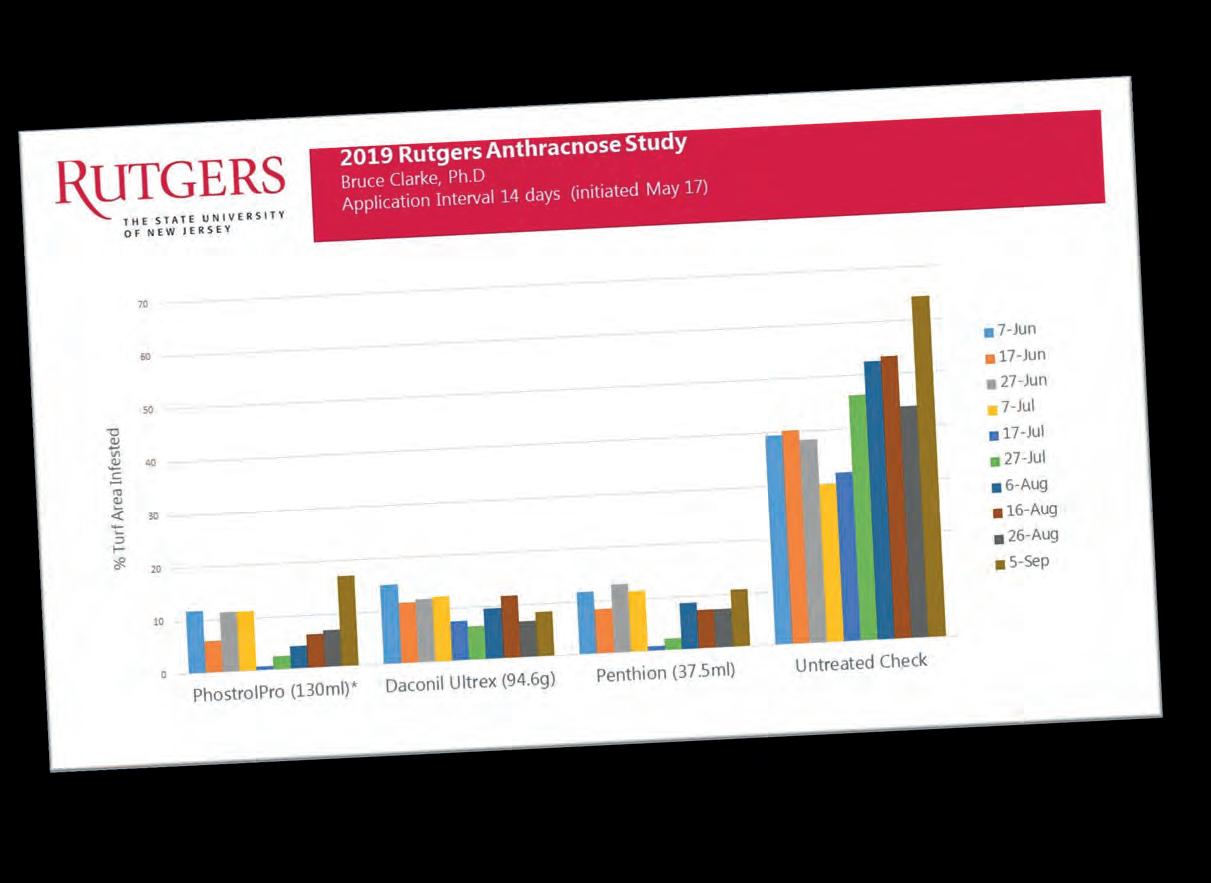
Phostrol®Pro is a unique and extremely systemic phosphite fungicide dedicated and registered for the turf industry. With both direct and indirect modes of action, Phostrol®Pro provides an effective, convenient, and nonconventional tool for the management of Anthracnose, Pythium blight and Microdochium patch.




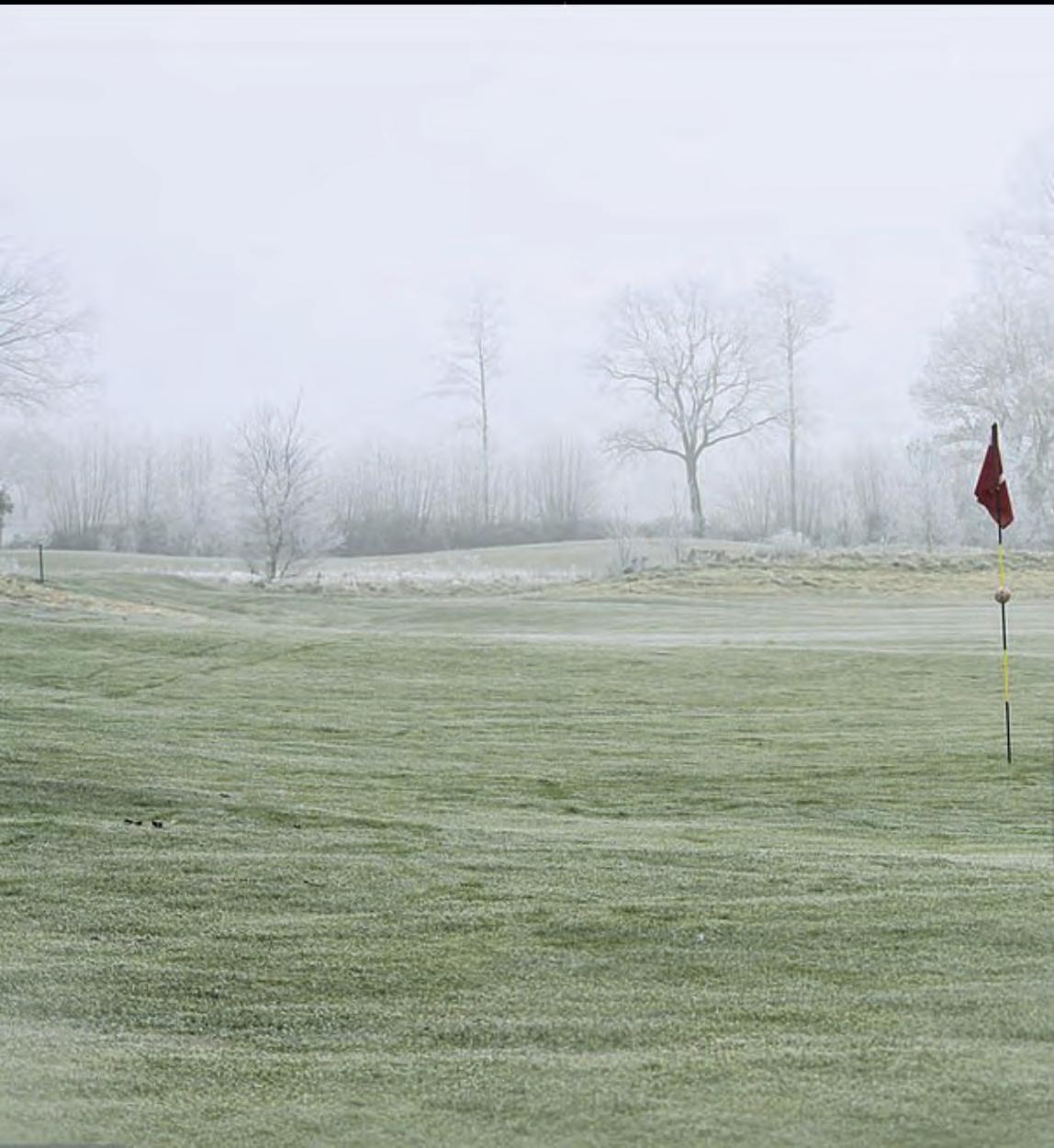
SNOW MOULD SEASON IS RIGHT AROUND THE CORNER, AND OUR TEAM HAS YOU COVERED.
WITH THE LARGEST PORTFOLIO OF INDUSTRY-LEADING SNOW MOULD PROTECTION, NOVA TURF IS DEDICATED TO HELPING YOU FIND THE PRODUCTS AND SOLUTIONS BEST SUITED FOR YOUR UNIQUE CONDITIONS AND BUDGET.
ASK US ABOUT OUR FALL BOOKING PROGRAMS, AND HOW WE CAN KEEP YOUR COURSE PROTECTED THROUGHOUT THE WINTER SEASON.
AT NOVA TURF, WE PRIDE OURSELVES ON COMMITMENT AND HOW FORTUNATE WE ARE TO HAVE STRONG AND LONG-LASTING RELATIONSHIPS WITH OUR CLIENTS. WE WOULD LIKE TO ACKNOWLEDGE HOW MUCH WE APPRECIATE THE OPPORTUNITY TO KNOW AND WORK WITH YOU ALL.
THE TEAM AT NOVA TURF




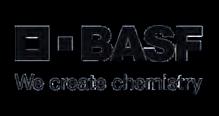
Matt Giles (902) 478-3843 matt@novaturf.ca
Scott Shanks (902) 799-1793 scott@novaturf.ca
Pascal Richard (506) 227-1585 pascal@novaturf.ca
Ryan Sherry (506) 567-8512 ryan@novaturf.ca
Turf

Gord Johansson,
Gord Johansson,
gordon.johansson@turfcare.ca



Bunkers are one of the most talked-about aspects in the game of golf. Since golf began on the linksland of Scotland, bunkers and their effect on the game have continued to evolve. I don’t see this changing anytime soon. The bunkers at KenWo Golf Club were no exception. In 2024, the club, in collaboration with consulting architect Ian Andrew and the golf course construction company Turf Masters, successfully completed an extensive bunker renovation project.
Over time, the maintenance of the bunkers became a major issue. After each rain event, the bunkers would fill with water and remain unplayable until the water was pumped out and the sand was raked. This led to the contamination of the bunker sand with fine particles and silt. Rocks from the bunker liner had begun to migrate upwards at an alarming rate, making the daily task of picking stones necessary. At this point, a significant amount of labor was being allocated to bunker maintenance just to keep these areas playable. Due to the constant issue of bunkers filling with water and creating washouts, maintaining a consistent sand depth in the 41 bunkers on the golf course was nearly impossible. Consequently, the quality of the bunkers did not meet the expectations of the KenWo members or the golfing public. The location and visual appeal of the bunkers were also topics of discussion, and this project provided an opportunity to address these concerns. Many bunkers were in locations that did not affect the hole strategically or mentally as intended. During the project, several bunkers were removed, added, or reoriented to better fit within the hole.
Once the decision to renovate the bunkers was made, the next step was to determine the method of construction. Many factors were considered in this decision, including the longevity of the bunkers, cost, available materials, and the building timeline. After
receiving multiple quotes and holding discussions, the club finalized their intended design method. The renovation would leave the course with 37 bunkers, three of which would be in practice areas. The bunkers were shaped using materials already on site. The design includes grass faces with slope severities ranging from smooth transitions to steep, nearly vertical faces. The bunkers have a flat-bottom style, which eliminates the possibility of washouts and makes it easier to maintain consistent sand depths across the course. The bunkers were filled to a depth of 6 inches from the highest point in the bunker bottom, and then compacted to firm the surface. Depending on the size of the bunker, there is at least one access point; however, most have multiple entry points for safe access. Each bunker was equipped with new drainage and a sod liner to separate the sand from the native material below.
The project began on September 1st, 2023, and finished on May 25th, 2024, when all bunkers were returned to play. The project wrapped up for the year in mid-December 2023. A favorable fall allowed the construction team to install drainage, shape, and sod all the bunkers prior to the winter break. Once this work was done, the wait was on for the installed sod to establish in preparation for adding sand. A mild winter and spring, coupled with multiple fertilizer applications, allowed the sod in the bunker liners, faces, and surrounds to establish quickly in the spring. A dry spring and a good stretch of sunny weather allowed sand to be installed efficiently with minimal disruption to the golfers. Completing this project without closing the golf course was a challenge in itself. Having an extra hole on the property made it much easier to close holes, and on occasion, tees were moved to avoid the work areas, ensuring that safety was not an issue for the construction team.
With new bunkers comes a new bunker maintenance plan. Each bunker is slightly different: how much traffic it sees, what irrigation it receives, daily sunlight it gets, and the direction the bunker face is oriented. Fertility, growth regulators, herbicides, wetting agents, mowing practices, and sand detailing are all factors that will be considered in a bunker maintenance program.
This has been a successful project that will change KenWo Golf Club for years to come. So much work went on behind the scenes during this project. The hard work of everyone involved can be seen in the results, and everyone who was involved should be extremely proud of their efforts.
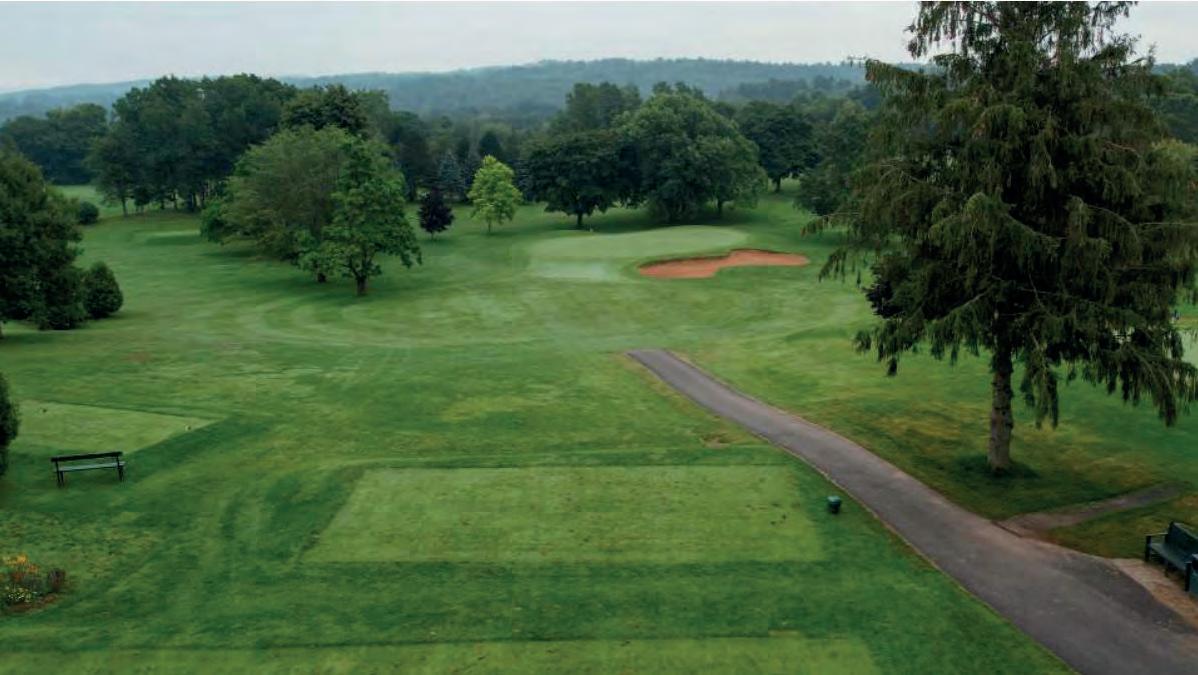



"Overthepast4yearswehavehadtheprivilegeofworkingwithTurfMastersonourmasterplan. Theyhavebeenoutstanding.Thequalityofworkhasbeentothehigheststandard.Notaskor problemistoobig.Theowner,AndyStreatch,isareliableandprofessionalmanwithaskillset thatwillensureexcellentresults.Ourgolfcoursehasbeentakentoanotherlevellargelythanks totheconstructionexpertiseofTurfMasters.”
- Sue Crawford, Superintendent, Brightwood Golf & Country Club



Club Car Carryall is an industry workhorse, renowned for its ease of use and day -in, day-out durability. With multiple models and accessories available, you’ll find the Carry All UTV that fits your course and works as hard as your crew.
Available in Electric, EFI Gas and now a powerful, durable, maintenance-free lithium-ion option with added benefits: Maintenance free battery
Longer battery life: (designed to last up to 10 years) More efficient charging: (up to 40% faster charge times) Increased power and performance. Best in class hill climb power. Lighter weight than lead acid powered vehicles. Lithium battery capacity does not de-grade over time.













by Paul MacCormack

The practice of yoga has always fascinated me. The breath work, the mind/body connection, and the way it can absolutely destroy you without you leaving your mat. Yoga has had a profound effect on my body and my well being.
A key yoga lesson which has stayed with me over the years is that of support. A wise teacher once explained that when doing a pose, the primary source of strength doesn’t always come from the main body part you would assume it would. Instead, much of the strength and stability comes from the surrounding cast of limbs and muscles. They are the support staff and when you activate these seemingly unrelated parts, the pose becomes achievable.
This key lesson has been on my mind lately when contemplating our lives as Greenkeepers. When you think of your course, or, even more specifically, a green that might be struggling, it can be easy to assume you automatically know the source of the problem. But often the solution to a nagging issue can be a combination of seemingly unrelated factors. Things like air movement, shade, nutrition, compaction relief, or any other of a host of cultural practices can act as supports working together to improve the situation and provide relief.
...often the solution to a nagging issue can be a combination of seemingly unrelated factors.
What if you apply this same idea to your personal lives? If you are suffering, what are the support systems that you can look to that for help? What types of cultural practices can you rely on to help with your personal well being? Do you reach for the quick fix (insert snake oil jug of magical elixir)? Or do you have a dependable network of resources you can call on when we need to?

What does your network look like? Here are a few that have helped me over the years…
• Physical Well Being – How are things for you physically? Do you take care of your temple? Exercise of any kind will do, along with getting any nagging issues taken care of. It’s really easy for us to let our physical health slide when we are in the throes of the season, but if our bodies are working properly it can go a long way to helping you deal with the rigors of the gig.
• Mental Well Being – Do you make regular visits with yourself? If so, are you good friends with that person? A lot of us do better caring for the physical part, but completely neglect our mental wellness. If we are tending our inner faculties on a constant basis, then we stand a much better chance of living a healthier life overall. If we instead choose to pretend that we are “always fine” then it’s just a matter of time before the house of cards topples.
Taking care of our inner well being can take many forms. We can have hobbies, we can practice some form of meditation or “personal quiet time”, attend to ourselves spiritually, or anything at all that takes us inside and fosters a positive relationship with whom and what we discover.
When you are vulnerable enough to realize that you are not an island, you can develop the courage necessary to ask for help.
• Family – We can’t always choose the personalities which comprise our families, but we can choose how we interact with them. Taking care to focus on family well being and the quality of our relationships can be a key part of our support structure. Often times our families are unintentionally sacrificed for our courses. No superintendent job is more important than your family. Make it so, and you will be lucky to have them there when you arrive home. This job is a challenging one but having a supportive family unit can make a world of difference.
• Friends – Like family, having a network of friends that you can rely on is paramount. Nowhere is this more evident than when you have a solid group of superintendents you can call on when things are tough. As a group, Greenkeepers have an amazing amount of empathy and knowledge to share with each other so make sure you tap that resource. No one understands what you are facing better than a good friend who has been through the same thing. Sometimes a good venting session is all that’s required to set your perspective right again. It’s also very helpful to have a stable of non-turf related friends. Supers have a funny habit of getting completely absorbed in the world of growing grass, so it can be mighty helpful to have friends who bring you back to the outside world from time to time.
These and other support systems can go a long way to ensuring that Greenkeepers are not only successful in their workplaces, but also healthy human beings. When you are vulnerable enough to realize that you are not an island, you can develop the courage necessary to ask for help. And before long you will realize that you are holding a yoga pose that you might have once thought impossible thanks to your supports.
Thanks so much for reading.





